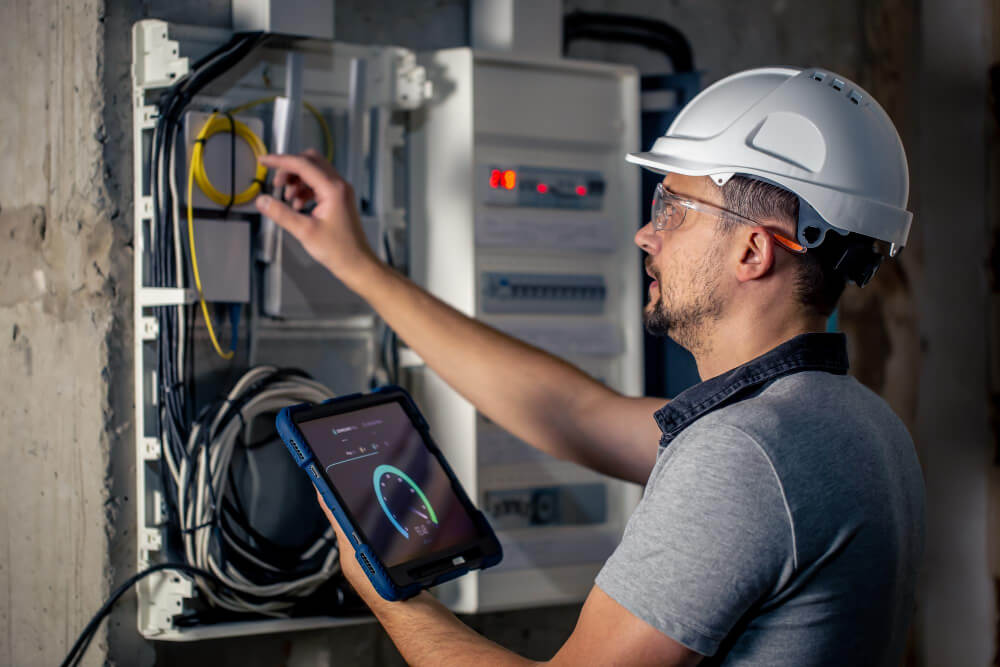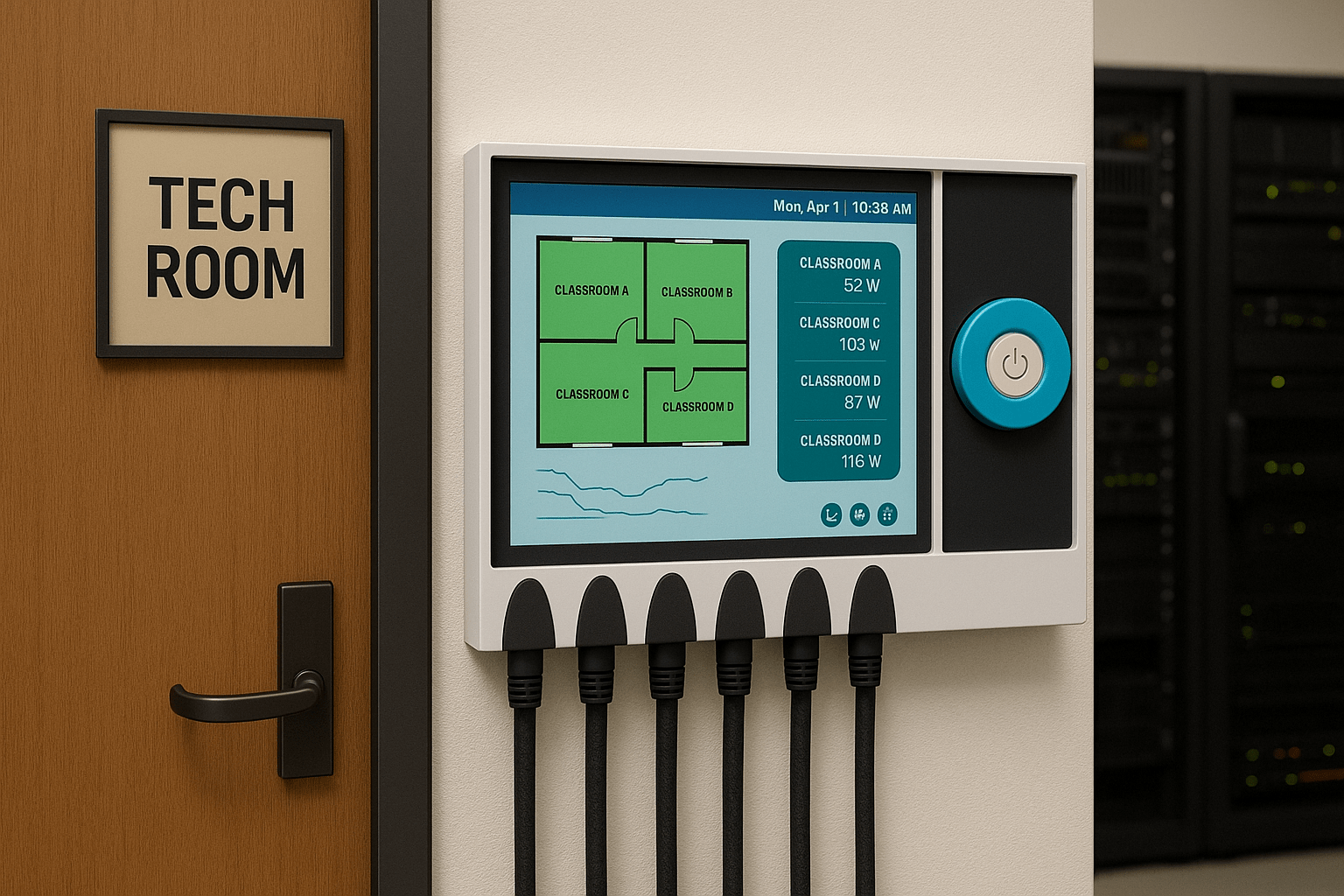
E Power enabling predictive electrical monitoring
Electrical systems remain some of the most common causes of building fires, and their cause frequently is hidden faults that normal equipment has no way of detecting. Breakers and fuses are reactive: they will trip after dangerous surges, but they won’t be able to detect the creeping, silent failures that build up over time. Science-based solutions like predictive electrical monitoring utilize real-time data, algorithms, and advanced sensors to prevent accidents before they take place.
E Power stands out by integrating infrared fire detection in its system. Infrared technology, used ubiquitously in thermal imaging and aerospace engineering, detects anomalies not visible to the human eye. Placing such precise instruments in electrical distribution boxes, E Power allows for real-time temperature profile monitoring as well as ignition risks. This combination provides a new level of resilience for Canadian buildings, whereby season extremes and aging infrastructure heighten vulnerability. With early detection and intelligent response, the system embodies the future of electrical safety science.
Science of Infrared Fire Detection
The science behind infrared fire detection is that all objects emit infrared radiation in relation to their temperature. When electrical components begin to overheat, they produce characteristic infrared signatures long before visible flames are observed. Such signals are detected and analyzed by special sensors and implement an early warning system for fire risk.
E Power takes advantage of this technology by placing infrared sensors within distribution systems. Unlike smoke alarms reacting only after combustion begins, infrared detectors locate pre-combustion thermal anomalies. This scientific advantage enables real-time intervention, so predictive electrical monitoring operates in real time. The ability to detect non-visible heat changes sets E Power apart, giving Canadian buildings a physics-based safer basis rather than delayed reactions.
Predictive Electrical Monitoring with Algorithms
Sensors are necessary, but algorithms make predictive electrical monitoring revolutionary. Infrared fire detection and thermal sensor information are monitored continuously for anomalies by machine learning models that are trained to recognize anomalies. The system foresees when conditions are approaching dangerous levels by identifying minute variations in current, resistance, and temperature gradients.
This research-driven approach is a case in point of predictive maintenance strategies applied to different industries such as aviation and electricity generation. In so doing with E Power, structures enjoy an anticipatory system of safety that functions to inhibit insulation failure or spark ignition prior to occurrence. With Canadian markets, where highly fluctuating electrical loads are typical, predictive analysis makes possible reliable prevention over costly reaction.
Infrared Detection in Harsh Canadian Environments
Canada’s severe environment is a unique challenge for electrical systems. Load intensity and heaters are increased by winter heating requirements, and cooling during the summer adds surges of its own. All of these loadings accelerate the degradation of wiring and components. In this context, infrared fire detection has no equal for durability because it does not rely on contact but detects radiation through walls or covering casings.
By adding this capability, E Power offers continuous monitoring even in remote locations of a building. With predictive electrical monitoring, this technology provides full visibility without intrusive inspection. For Canadian building owners, this translates into greater assurance of safety, lower maintenance costs, and enhanced compliance with national fire safety codes.
Scientific Edge of Data Integration
E Power’s genius is not just in hardware but in the integration of data. Predictive electrical monitoring requires the combination of temperature curves, current load trends, and infrared measurements into a single model. Statistical inference and time-series forecasting are applied to create predictive electrical health profiles in the system.
This mirrors applied physics and computational engineering practices where varied streams of data converge to produce predictive outputs. In the case of building safety, the outcome is simple: infrared fire detection ensures early prevention, while predictive models deliver actionable projections. This scientific synergy gives E Power the ability to move beyond mere devices, effectively incorporating complex research into functional infrastructure.
Strategic Impact on Canadian Smart Buildings
The application of predictive electrical monitoring has implications beyond individual structures, it transforms the broader Canadian smart building industry. Safety is progressively connected to insurance, environmental sustainability, and operation efficiency. By combining infrared fire detection with advanced algorithms, E Power directly caters to these demands.
For property managers, this science basis provides real value. It minimizes downtime, lowers risk, and confirms adherence to Canadian safety standards. Most importantly, it builds confidence in smart infrastructure technologies through the proof that science-based methodologies can safeguard both residents and investments. With the Canadian smart building industry expanding so rapidly, E Power becomes a pioneer in applying rigorous scientific methodologies to everyday safety concerns.
Conclusion
Development of building safety is dependent on the unification of science and practice. Conventional devices are incapable of delivering resilience in the face of rising electrical loads and advanced infrastructures. Combining infrared fire detection with predictive electrical monitoring, E Power provides a viable scientific solution to one of Canada’s most pressing safety issues.
Infrared sensors pick up early anomalies, and predictive software takes raw data and translates it into proactive responses. This partnership is the epitome of scientific ingenuity: abstracting theory into practical protection. For Canadian structures with old infrastructure and extreme seasonal loadings, such a system not only serves to be useful but also obligatory.
Ultimately, E Power demonstrates the power of scientific research, applied wisely on infrastructure, to save lives, save dollars, and pave the way for the future of smart buildings. By focusing on proactive rather than reactive solutions, it sets a new standard wherein electrical safety is driven by science, forecasting, and prevention.



